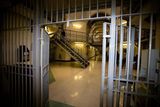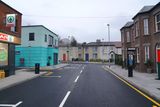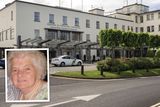Actions of crew who died in R116 helicopter tragedy were not a factor in crash, air accident inquiry finds
Investigation Unit publishes report into 2017 disaster that killed four
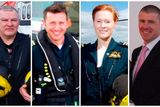
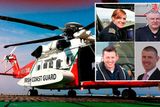
The final investigation report into the R116 disaster has found that the actions of the crew were not a factor in the crash.
After an extensive and lengthy inquiry, the final report of the Air Accident Investigation Unit (AAIU), published today, has made more than 40 safety recommendations in light of its findings. The report lays out a detailed narrative of events that led to the tragic deaths of Captain Dara Fitzpatrick, Captain Mark Duffy, winch operator Paul Ormsby and winchman Ciarán Smith.
All four Irish Coast Guard crew members died when their helicopter crashed into Blackrock Island, off the north Mayo coast, on March 14, 2017. The AAIU’s final report will show that human error was not a contributing factor in the doomed rescue mission.
The report draws attention to the required safety procedures and protocols and makes reference to the Irish Aviation Authority (IAA), the Irish Coast Guard, and helicopter operator CHC Ireland.
Read more
The investigation, one of the largest undertaken by the AAIU, considered a number of factors, including organisation and management of the mission, the operator’s procedures and guidance, helicopter systems, navigation, mapping and charting, human performance, aircraft performance, survival aspects, ergonomics, oversight, risk management, and a deeper analysis of the recorded data and recovered wreckage.
In its 2017 preliminary report, the AAIU highlighted issues with quality of navigational data available to the crew, along with faulty functioning of locator beacons in their life jackets.
The report found that Rescue 116 hit Blackrock Island, where some of the helicopter debris was found.
It also found that the island wasn’t registered on the crew’s internal mapping system.
In relation to Blackrock and its lighthouse, the enhanced ground proximity warning system (EGPW) manufacturer informed the investigation that “the lighthouse obstacle is not in the obstacle database and the terrain of the island is not in our terrain dataset.”
The report stated: “The Rescue 116 recording contains no reference by the crew to the presence of a lighthouse or terrain at Blackrock during their briefing for APBSS.”
A rear crew member of Rescue 116 identified an island approximately 13 seconds prior to the initial impact with terrain, according to the report.
The publication of the final investigation report comes after a review board was established last March to examine certain findings following a request from one of the parties subject to the investigation.
The process resulted from a claim by the party in question that the findings reflected adversely on their reputation. The law governing air accident investigations allows any person or organisation to seek a re-examination of “any findings and conclusions” that appear to “reflect adversely” on their reputation.
However, this was the first time an AAIU report was referred to a review board in the AAIU’s 25-year history, during which it has carried out nearly 1,000 investigations.
The Review Board, chaired by senior counsel Patrick McCann, was established in line with Regulation 16 of Air Navigation Regulations 2009.
The regulations provide that on completion of the re-examination the chairperson of the Review Board makes a report to the Minister for Transport. Last October it emerged that a key member of the team reviewing the report resigned due to a conflict of interest.
The resignation of Phillip Hanson, a senior manager at the UK Coast Guard, and the technical expert on the two-man review team, came after Mr Hanson disclosed that he had a personal connection with a senior manager at the helicopter operator, CHC. That manager was due to give evidence on behalf of CHC to the review board.
The bodies of Captain Dara Fitzpatrick and Captain Mark Duffy were recovered in the days after the tragedy. The remains of their colleagues, Paul Ormsby and Ciarán Smith, remain lost at sea.
Their helicopter had been dispatched to provide assistance to another helicopter, Rescue 118, that was retrieving an injured fisherman from a trawler in the Atlantic.
The inquest into the deaths of the crew cannot be completed until the AAIU report is published.
Join the Irish Independent WhatsApp channel
Stay up to date with all the latest news


